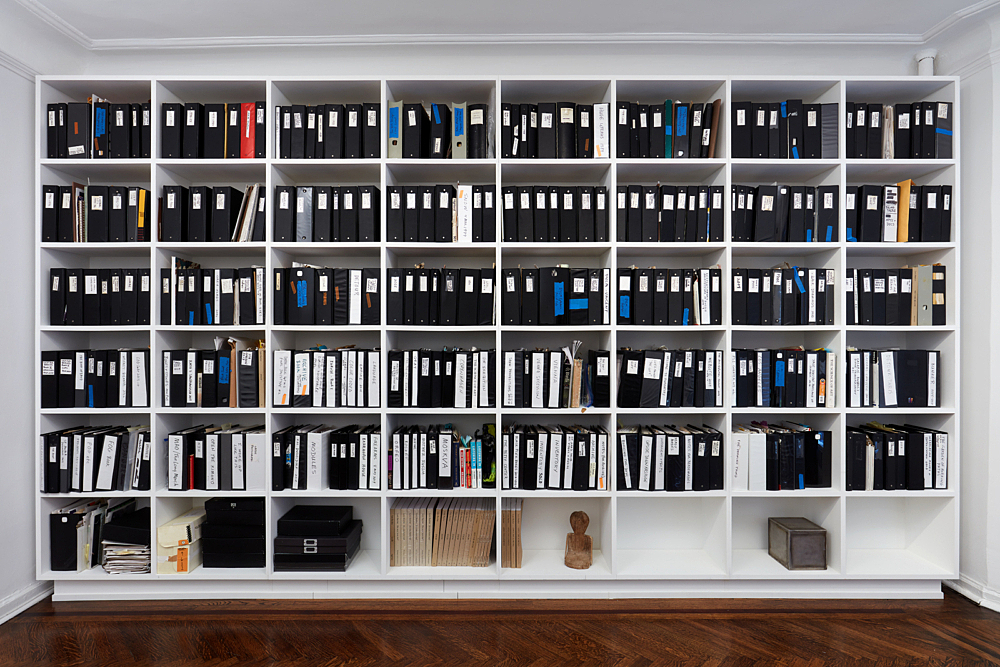
In 1976, the artist Lutz Bacher was approached to be interviewed for a volume of artist interviews, a young artist who had adopted a masculine, German-sounding pseudonym that covered her work in an air of conceptual mystique. Accordingly, the interview proved to be something of a challenge, breaking apart the artist’s concepts and motives in a manner that would ultimately force some of her underlying concepts into the light of critical appraisal. This awareness led Bacher to try something different, interviewing herself around one of her long-running fascinations, the assassin of President Kennedy, Lee Harvey Oswald. Delving into the conspiracies around Oswald and his convenient murder, the interview was then printed over with a series of photostatic prints.
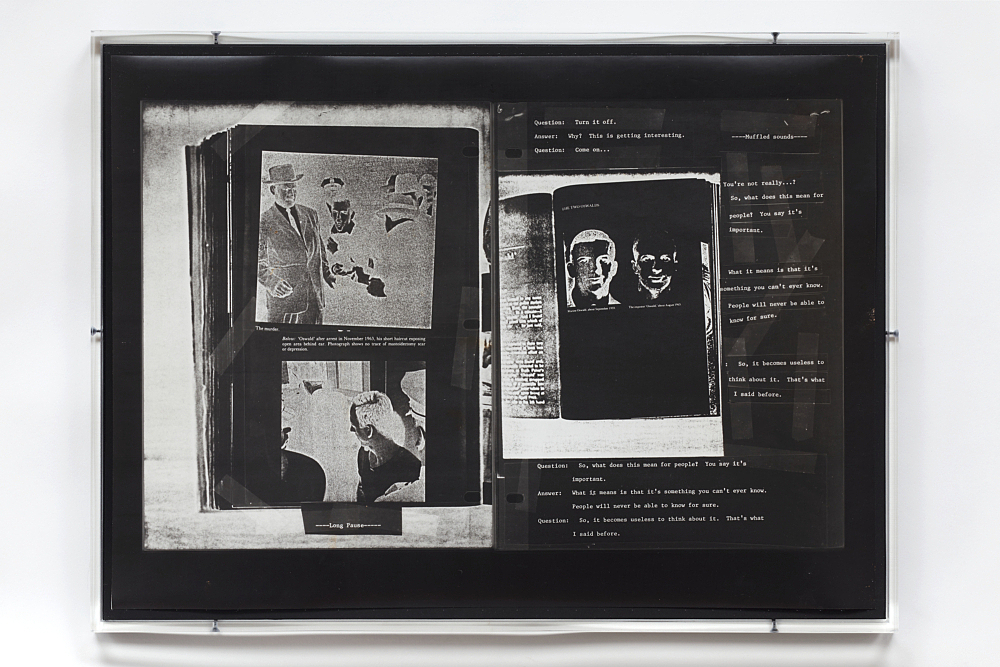
This work, which would ultimately be called The Lee Harvey Oswald Interview, delves into the collective memory of this formative national trauma, and whose story continues to vex skeptics of the official narrative to this day. In the following decades, Bacher would reiterate The Lee Harvey Oswald Interview in different formats, including not only the photostats, but also as live multimedia performances in the ‘80s. The work is presented this month at Galerie Buchholz in New York this month, gathering all versions of the Interview together for the first time, including the positive and negative photostats, the performance and video versions, materials from the 1984 performance, its appearances in her publications, and a series of pasteups.
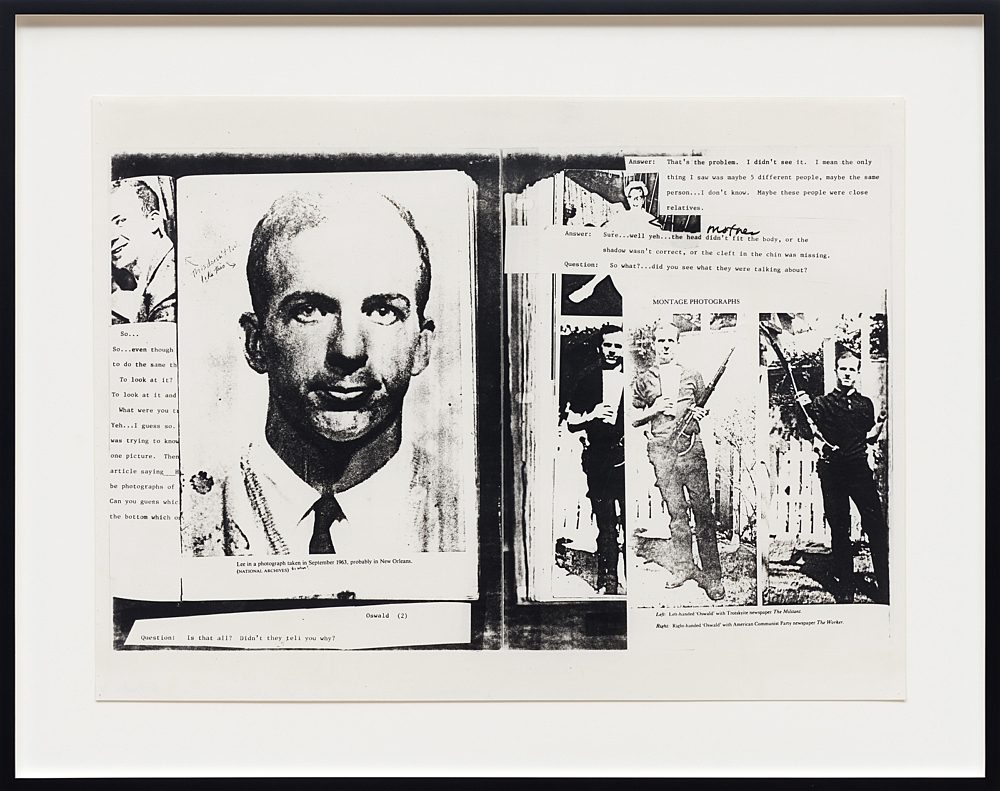
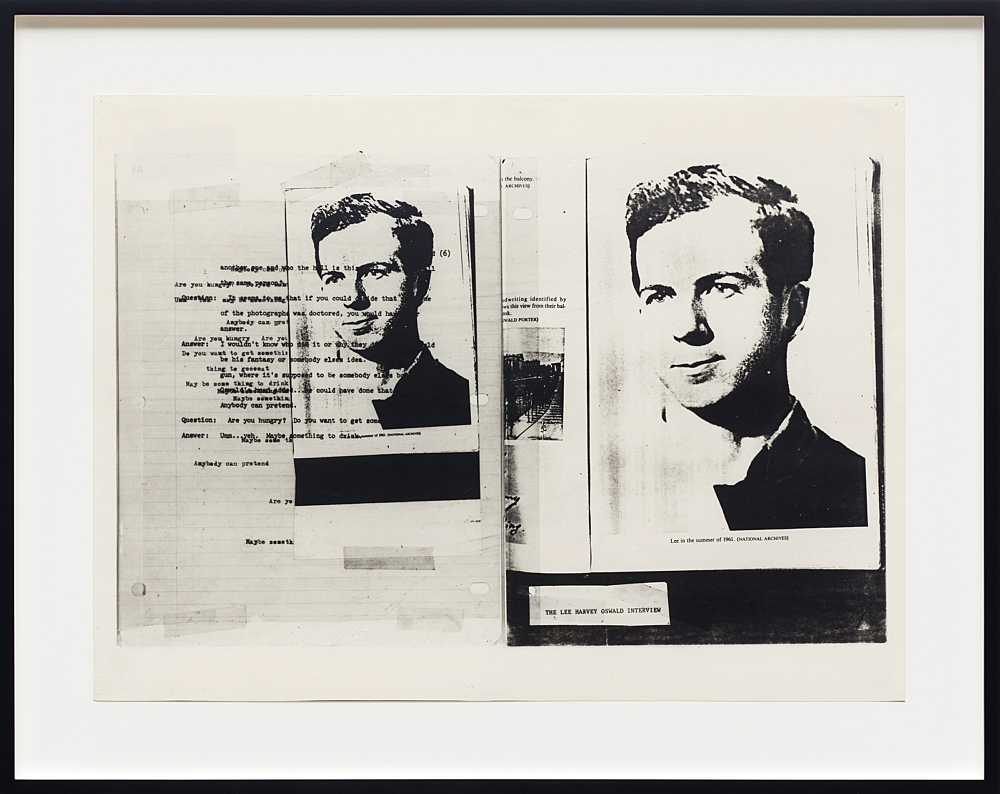
Each iteration was considering a new, unique version of the work, with the artist introducing various threads and variations on the understanding of the interview and her interests in both Oswald and the obfuscation of her own identity in turn. In Oswald, Lutz would find something like a cypher for her own conspicuously displaced subjecthood, and an example of how unknowability can provoke desire, intrigue, and speculation. In the Interview, she focuses on theories of Oswald having body doubles, and much in the same way, her work ultimately takes on a series of those same body doubles, mirror images of the work that seem to function in unspecified variations.
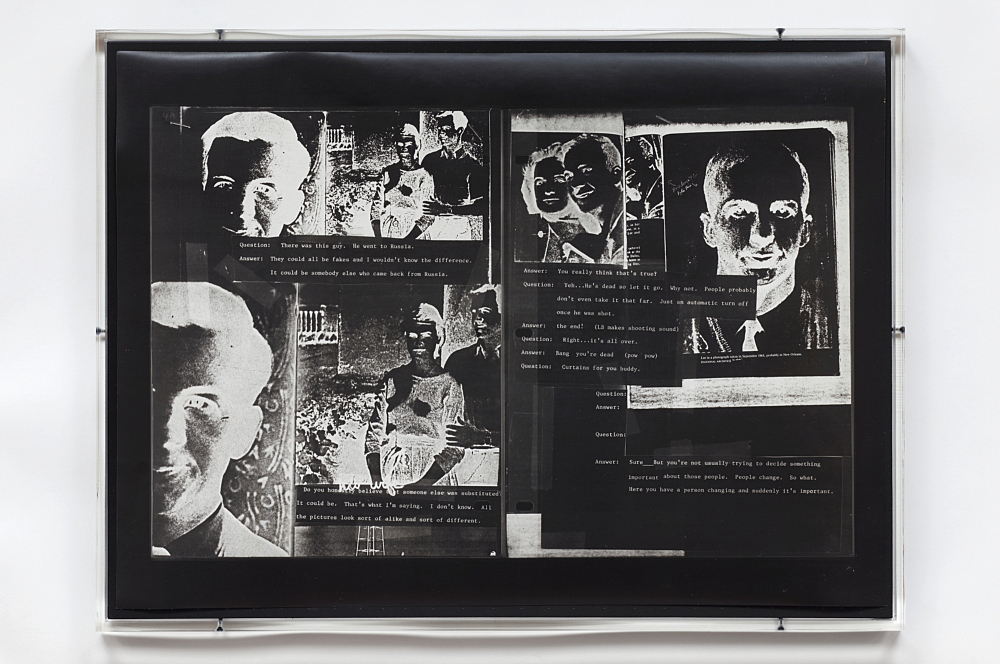
Taking the artist’s work as a jumping off point to explore her formative ventures into identities and bodies, generative projects and the hazy, nuanced understanding of the artist as operator and creator, the show is a fascinating look into Bacher’s work. This is perhaps best seen in The Betty Center, the preserved collection of her writings, sketches, and collected materials, assembled in a series of binders the artist has designated a work in its own right. Musing on the full scope of her work, the show seems to look at Bacher from both her early works, and her final pieces.
The show closes February 5th.
– D. Creahan
Read more:
Lutz Bacher at Galerie Buchholz [Exhibition Site]



